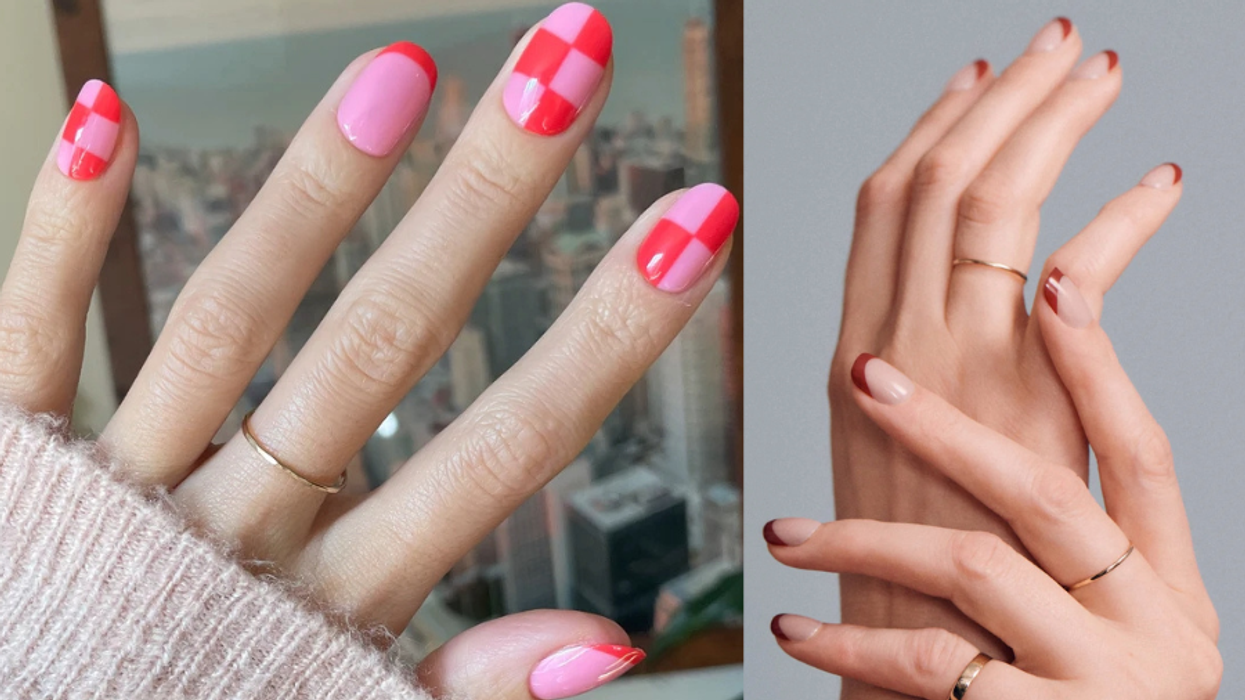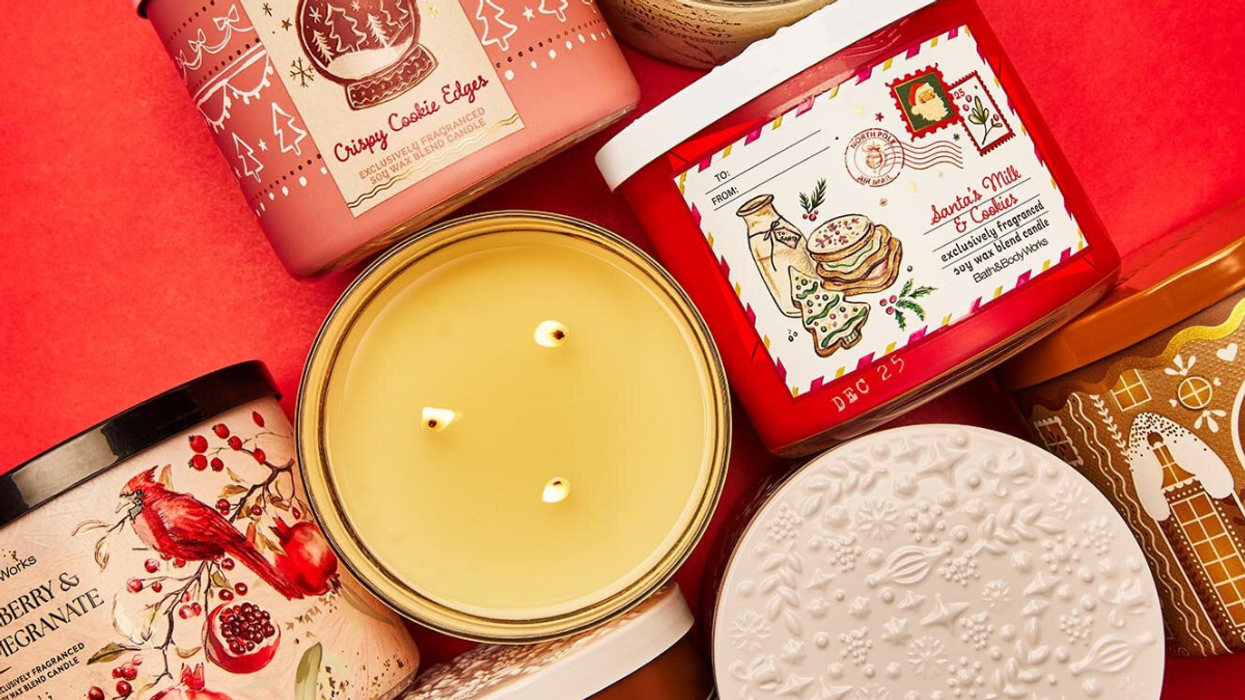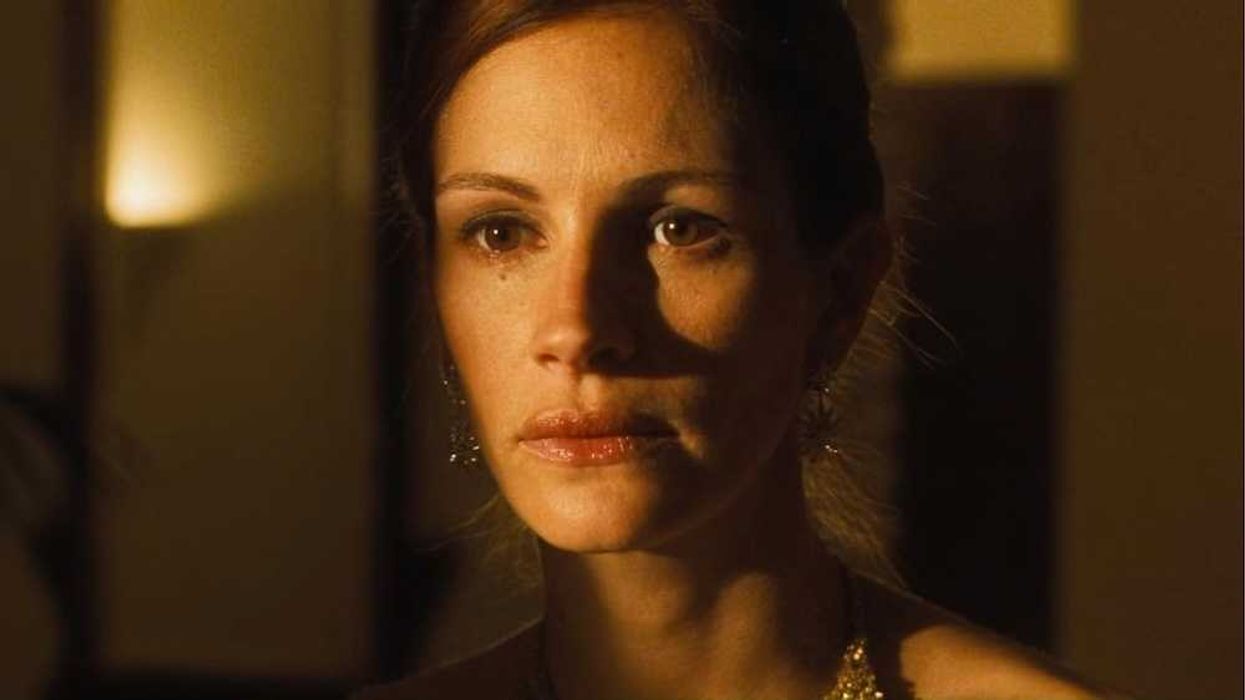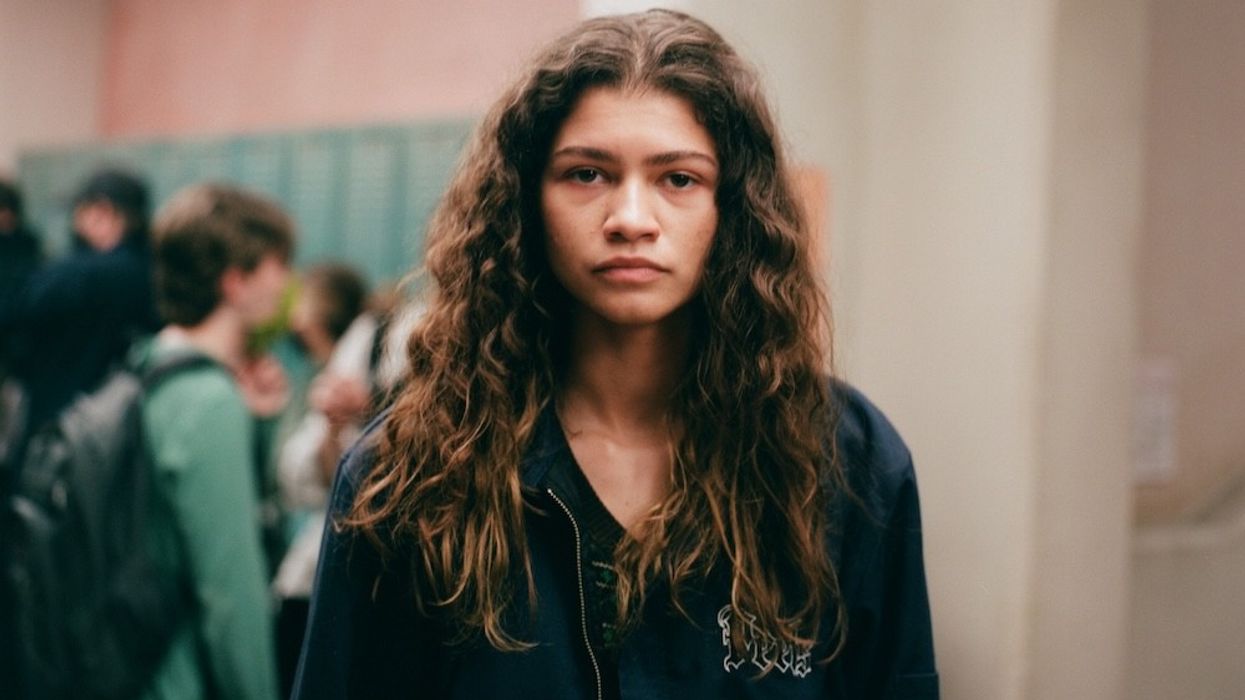Breaking down ethical non-monogamy, one question at a time.
Dating Diaries: I'm In An Open Relationship — Here's What To Ask Before Opening Your Own

For February, we're introducing the Dating Diaries — a chance for women to work through their romantic lives and teach us a little something in the process. Whether they're single, taken, or some kind of mixture in between, these women are ready to dish on all the dos and don'ts, the ins and outs, and anything else they care to share about modern dating.
Open relationships and ethical non-monogamy – the choice to practice love, of all sorts, with more than one partner – are having a moment. More: A Memoir of Open Marriage, the revelatory debut from author Molly Winter, hit bookshelves last month. New York Magazine selected "polyamory" as the theme for their January cover story. And Finnish director Selma Vilhunen’s Four Little Adults made a salacious splash last year on the international festival circuit for its noteworthy portrayal of a couple embarking upon the daunting task of opening their marriage.
Perhaps, however, non-monogamy is not simply de riguer. Rather, this alternative approach to partnership – and, as a byproduct, a means of sustaining love and connection in the long term – is arguably an inevitable next phase of relational understanding on a broader scale for many people. And while polyamory, non-monogamy, or open relationships are not going to be everyone’s cup of tea, if you are interested you should familiarize yourself with the steps required to actually choose this path.
When people ask me about the process of opening my nine-year partnership, I emphatically disclose: it is not for the faint of heart. Transitioning to non-monogamy – just like all processes that center on human emotion – should be intentional, consensual, and safe. But, when it’s all said and done, and parameters have been mutually established to allow for ongoing respect from and toward all parties, let me assure you: the juice can most certainly be worth the squeeze.
So, what questions should one ask as they begin to lay the groundwork for such a taboo-busting paradigm shift? Here are the six things you should ask if you're considering an open relationship.
1. What are our agreements?
Defining your terms of agreement is the place most couples choose to begin as they start to envision a world outside of their confined duet. Often, people inquire about the “rules” I established with my partner. I like to delineate between the term rules and agreements. According to The Ethical Slut (polyamory’s de facto theoretical bible, published in the late90s), many non-monogamists feel the term rules “implies a certain rigidity.” Authors Dossie and Easton clarify that, accordingly, they rely on the term agreements “to describe mutually agreed upon, conscious decisions, flexible enough to accommodate individuality, growth, and change.”
Semantics aside, outlining the basic criterion of what does – and does not – feel safe (especially in the seed phase of this process) is essential. Some themes to first consider are:
- Frequency — How often are we comfortable seeing other people?
- Quantity — How many additional partners is too many additional partners?
- Safety — How do we avoid bringing home something unwanted? (See question 5)
- Interim Communication — Are we consistently texting our partners? Keeping it casual? Setting boundaries on phone usage?
The list of agreements continues, but if there is one pearl of wisdom I'd personally impart, it’s this: acknowledge the possibility that your agreements may change with time, experience, and exposure. After all, opening your relationship is not about obduracy — on the contrary, non-monogamy is the practice of expansion and acceptance. This flexibility should, in theory, apply over time to your foundational terms.
2. Are we comfortable telling people?
There can be a lot of misunderstanding, and with that, shame associated with ethical non-monogamy. Though an initial period of self-flagellation is misguided and undue, it's crucial to name this reality–especially as it often rears its head at the very start of choosing an ethically non-monogamous path. As with all things pertaining to the intricacies and intimacies of a relationship, it's salient to touch base with your partner about if, and how, you will go about disclosing the details of your new adventures to your broader community.
Pro tip: the more you practice sharing, the more control you have over the narrative around your decision to walk the road less traveled.
3. How do we want to find potential partners?
Remember when Carrie first encounters Ray the Jazz guy at his club while she’s on a date with Big on Sex and the City? Or Miranda has that memorable meet-cute with Officer Gibbs after arriving to help her friend recover from the midday mugging? Alas, gone are the days. Though it’s nice to fantasize about organically crossing paths with your next suitor or suitress out in the real world, sadly, that version of connecting is becoming increasingly rare. Especially when you’re looking to meet someone as a priorly-partnered individual yourself.
Thus, get comfortable with the prospect of making an online dating profile. When my husband and I first opened our relationship, it took a bit of nudging to convince him to sign up for Hinge, so we decided to make the process collaborative and fun instead. Cocktails in hand, we sat at the kitchen table and constructed profiles alongside each other, offering insight and strategic tweaks to ensure we each had created the most optimal means of attracting our additional plus-ones.
It's worth noting: different apps offer disparate user experiences for the ethically non-monogamous. I like to think of Hinge as a Sunday cappuccino, while Feeld is more of that late night, extra dirty martini — both enjoyable, both distinct. Luckily, many dating platforms today give users the option to explicitly denote what type of relationship they're in and what type of relationship they're looking for – hence, eliminating the awkward step of having to clunkily disclose your non-monogamous status after the match has been set.
4. How much do we want to know?
Don’t Ask Don’t Tell is a commendable, if not at times naive, approach to handling the many nuances that come with transitioning to an open relationship. Intentions aside, concealing all intimate details is not often a realistic – or desirable – approach to maintaining this lifestyle. Perhaps some individuals utilize this strategy at first to erect boundaries that will ostensibly prevent jealousy from creeping into the walls of their primary partnership.
But, ethical non-monogamy is built first and foremost on trust. And, accordingly, it's helpful to flesh out the parameters of what is and is not acceptable to know about your partner’s partners. Though it can feel scary at first, you may be surprised to find that learning more about the people with whom your partner is canoodling can shockingly be erotic in and of itself. Beyond that, some non-monogamists have even found that, ironically, disclosing more about their paramours, in fact, assuages jealousy in the long run. Never forget that knowledge is power.
5. Where is the nearest sexual health clinic?
Listen, nobody wants an STI. But, given the fact that the CDC found that 1 in 5 adults have reported testing positive for a sexually transmitted infection, it's pertinent to acknowledge this risk and plan accordingly. And while condoms and other prophylactics are a necessary first line of defense, the truth is, sometimes mistakes happen. This isn’t all too surprising considering the fact that reaching a state of arousal is literally predicated on the lateral orbitofrontal cortex (the part of the brain responsible for logical reasoning and moral judgment) becoming far less active, thus impeding one’s ability to think rationally during the throes of passion.
So, before you consider jumping back on the bandwagon of casual trysts, it may behoove you to do some preliminary R&D, in order to find your nearest clinic or health care provider. Better safe than sorry!
6. Why are we opening our relationship in the first place?
Yes, this query is coming at the very end of the list. But, of all the questions to ask, some would argue this one is paramount.
Poly-Under-Duress, or PUD, is a term coined by sex columnist Dan Savage. Savage emphatically cautions against embarking upon polyamory without clear and defined mutual buy-in from both parties. And while one should not expect to approach non-monogamy from the exact same perspective as their partner (usually, this process is a journey that requires patience, time, and empathy), it's imperative that no one party agrees to open a relationship solely in a last-ditch effort to save their union.
Non-monogamy should not be the remedy to an emotional malady within your primary partnership. On the contrary, this lifestyle choice should be, as my husband likes to aptly describe, a supplement, rather than a cure. It should, in time, bring light and joy into a dynamic that is strong enough to stand alone without it. A scintillating new wrinkle that yields excitement and discovery, overall, for both partners.
The choice to open a relationship is not one that all will make. It's undeniably complex and certainly the lesser trodden path to relational bliss (for now). But, if you are even so much as considering such a lifestyle, it helps to have a strong foundation and a clear framework to guide you. Because when those two pillars are firmly in place and you’ve thoughtfully laid the groundwork for what is yet to come, let me assure you: that is when the fun begins.
Want more Dating Diaries? Check out our story on dating after divorce.
Header image via Pexels



















